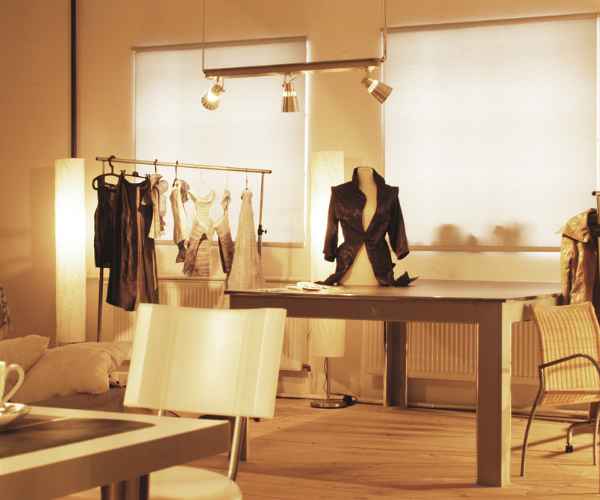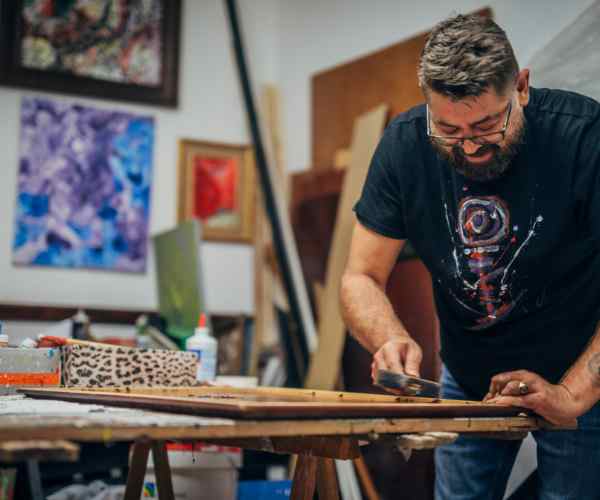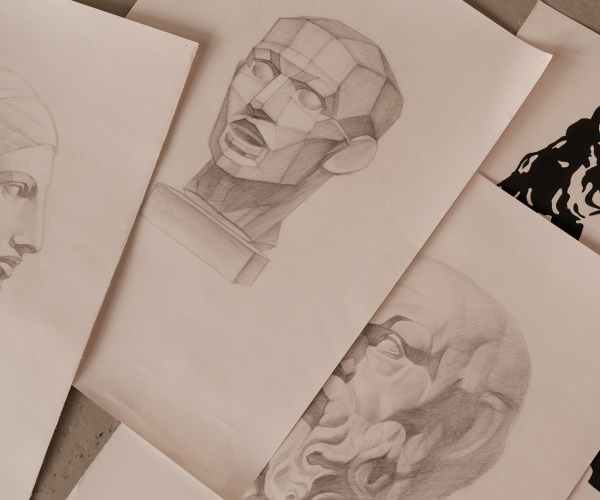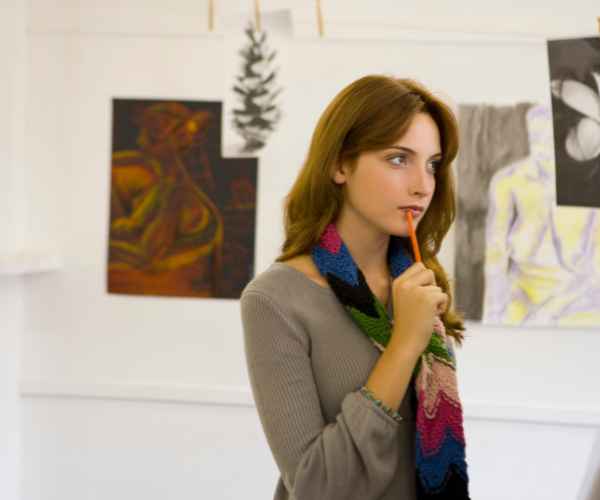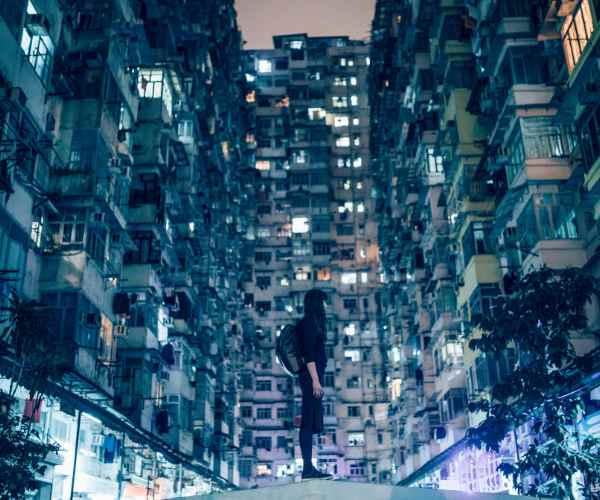Do you want to find ways to enhance your imagination as an artist?
You might want to give literature a try specifically poetry because that can serve as a great inspiration.
I consider myselfc an avid reader and an artistic individual, and from my own experience I know that art and writing make a great combination.
When you come across a legendary writer’s work, magic always awaits, It could be a book, a painting or even a dance.
In essence aren’t words magic? Words in the right order can paint entire worlds.
Moreover for someone like me, a single sentence from a good novel or a tear jerker poem can bring forth new ideas.
An endless supply of new ideas can be found from the literary work, lets take a look.
Working on poetry or literature can come across as quite useful for an artist, let us see how.
In every story and every poem, there always seems to be a plot twist, characters never go how you expect them to.
I perceive that gradually interacting with a text creates a captivating experience due to the inexplicable exchange of ideas flowing towards oneself. This vividly brings back the memory of me reading ‘The Great Gatsby’ while thoroughly enjoying it for the first time as I was intrigued by Fitzgerald describing the Jazz Age and his intricate characters through luscious and vivid descriptions, which ultimately lead me to a completely different world.
I remember vividly wanting to grab my paintbrush and recreate Gatsby’s mansion shimmering parties or try to capture Daisy Buchanan’s portrait to showcase her loneliness. It is in these very moments where we realize the magnificence literature possesses as it has the potential to stimulate us emotionally while simultaneously instilling in us the ability to create something fresh.
Many artists have achieved their greatest work by searching through their beloved books or poems while attempting to piece them together.
Great poets such as Rainer Maria Rilke can bring out breathtaking feelings that transcend through the body and emerge as photography or paintings.
The prose of Shakespeare, alongside modern poetry, has managed to bridge an emotional gap that fuels the urge for artists to illustrate their feelings through different means such as music, visuals and so much more.
My friend Sarah, as an example, is a gifted musician who frequently pens down songs inspired by Emily Dickinson’s poetry – she instantly comes to mind in this context.
She agrees with Dickinson’s poetry in as much as she has her own capacity to love and appreciate nature.
Sarah opens up whenever she uploads a new song because it seems like she is allowing her audience into her world of stunning words beautifully weaved with melodies.
Vincent van gogh is said to have been quite inspired with works of Charles Dickens and many other authors, that in turn contributed a lot to the depth of feeling in his artwork.
He also wrote to his brother Theo how Dickens was one storyteller who painted pictures of the difficulties faced by the ordinary man in his books and thereby encouraged him to render the ordinary life in one of his works.
Can you picture the vivid brush strokes and swirling sky that were painted as a result of stories of perseverance and success he made use of?
By including aspects of literature in our work, we are able to express stories beyond eras and places while also exploring raw feelings.
Considering how much we all love the gripping tales penned by great writers, if you are facing a creative block, give them a second look or maybe dive into poetry for that splash of inspiration.
You never know where inspiration for your art could be hidden in those words.
How to Find Artistic Ideas from Literary Works
Visualizing Literary Images While Reading Fiction
Looking for inspiration from a book and aliving ideas in art allows us to see fiction from a completely different point of view.
Every now and then, I will grab a book and start reading only to become completely enthralled by a particular piece of text that stands out.
With such striking imagery, I’m left with the burning question of how I can recreate it on canvas.
For example, when I read The Iliad, I can clearly see the overpowering and absorbing battle scenes, all while feeling the raging adrenaline rush within me.
Sword clashes, warrior battles, and battlefield pandemonium generate a variety of emotions in people.
To relate that all to a visually appealing piece, think about motion and energy filled paintings with dark and light color contrasts blended with bold strokes representing the chaos, now that would be interesting.
That sure sends an exhilarating sensation throughout my body!
Giving a scene where Achilles meets Hector the same feeling and energy that was told to me felt out of place, but this is exactly what I felt while creating a painting while developing a series based on Greek mythology.
Step one was to show and portray lifelike emotion instead of just throwing an artistically portrayed concept on a piece of paper, so step one was idealistic emotion, fear, rage, and their pre-determined fate.
This also aided me in coming to the conclusion that some pieces of literature aren’t just meant to motivate someone, they can help dictate the direction one takes in their art and the decisions one makes.
So, when you grab a book, ensure that you find a comfy spot and just go at your own pace.
Search for a passage that speaks to you.
Shut your eyes and picture the scenery.
What color palette do you observe?
What feeling does the image evoke?
Let the image lead your creative thinking process.
Letting Poetry Influence Your Artistic Approach
At this point, I would love to mention something about poetry and how it can influence your artistic approach.
Poems have their own rhythm and flow which is oftentimes very different from other forms of writing and this aspect has a great impact on one’s art composition.
For example, I recall reading a minimalist poem written by Mary Oliver. It was about the beauty that could be expressed in just a single moment in nature.
Her words were very short and they evoked quite an effort in me to come up with a sleek design that concentrated on the singular idea of a gentle flower with pieces of prose that gabbed something inside of the abstract.
It was the power of language and the vivid imagination that articulated abundance in visual silence.
In contrast, whenever I delve into the elaborate and somewhat unfortunate words of Sylvia Plath or William Blake’s overwhelming biographies layered with infinite details, I feel overpowered by their complex images embedded in their words.
Such kind of poems always bring an overwhelming fusion within my different artwork.
Plath’s poetry is rich with complex layers of feelings, which helps me add depth and texture to my own work, while Blakes’s suggestive imagery encourages me to delve into unreal issues that defy my imagination. Writing, too, is a pictorial art form, involving the manipulation of symbols. It may be a combination of words or pure poetry, but it can be a complicated process that is crafted while being influenced by the world around you.
Musical poems can facilitate the brushwork for painting with color – the movement or flow of the painting. Consider how the flow of a poem’s rhythm can affect your strokes. How about the arrangement of colors? How about how the poem makes you feel, whether it is chaotic or peaceful.
Move forward with your decisions on what work you want to create based on the feeling you get when you complete the poem.
Best Practices for Colliding Literary Ideas with Art
Abstractive Aversus Literature Textual Exposition
Some tips on how to combine poetic elements into your work of art or painting. One of them is how to interpret the text: is it in principles of an abstract or a literal form. Some definitely paint something as close to what has been read in a book where the mood of the scene has to be recreated with realistic details. For example, I remember seeing gorgeous gaze and vivid colors illustrations if not books. Surely, the scenes of people’s favorite novels were attempted to be painted exactly the way they have been.
But yes, without doubt, there is an appeal in abstraction too. There are some of my favorite works which are inspired by the ideas and emotions in the text but which do not portray the ideas and emotions literally.
For instance, in attempting to capture the emotional space of a brief yet impactful story I just read, I will leave out aspects of the event which might not be relevant.
It is about determining the core of the narrative and identifying the concepts that appeal to you the most.
Now, consider: Do you wish to replicate…”just like this to desired degrees qqh as possible, or will emotionally or academically appealing outputs suffice to enhance your original work?
Both are commendable approaches that can easily give birth to some of the strongest work.
As for the last topic, how do you create a character for portraits in terms of emotion?
Now, it’s time to answer the last question: how do you create a character for portraits in terms of emotion.
Character emotions when combined with character descriptions as seen in novels are often the best place to go for inspiration.
For some reason, when I read about a character’s hardships, their successes or even when they are in quiet meditation, I want to ‘put that in a picture’ which is rather puzzling.
Let us start with the obvious. Let us start with the obvious: Jay Gatsby and Elizabeth Bennet, their emotional backbone is the basis of what I’m sure you’ve been thinking about as you stocked p.
In what way are you going to paint a single canvas that depicts the theme, a character’s wants and its fears?
The goal is to try and get to know these figures’ emotional structure as much as possible so that the artistic representations are based on that structure.
I remember focusing on the portrayal of the character’s eyes while painting the portrait mainly because I wanted to convey the extensive burden of the character’s experiences in the classic novel, alongside their dreams.
There is a fascinating tale behind those eyes that these characters or figures possess which goes beyond simple words.
Combining Visual and Literary Artistic Work of Dali with Dante’s Inferno.
One primary example of how a particular text can fuel imagination is visible, for instance in the eternal marriage of Salvador Dalí’s surrealist paintings with Dante ’s Divine Comedy.
An unsurprising truth about Dalí is the way he epitomized his works into moving images, his works revolved around expls and complex literature.
His rendition occupies realms of imagination and sophistication- the Crossing of the Dantes branch of the Styx River together with Roman sculpture alleviates center.
One evening, while flipping through an art book, I caught a glimpse of one of Dali’s renderings of one of the realms of Hell.
What one might call the amorphous pictures and the incoherent figures were so alluring that I found myself fully engrossed in Dante’s voyage.
The blend of reality and fiction had me to sense the interracial environment, the pressure and the darkness that resided in that world.
Dali’s visions of Dante navigating the levels of Hell are remarkable in demonstrating the potential an artist has and the amazing creations they can produce through transformative literature. As a creator Dali was not merely recreating but rather delving through layers of emotion and philosophy through the narrative he was narrating.
It’s a reminder that literature is not merely stories, but a whole side of artist who can recreate and narrate once again.
The Dali painted images of surrealistic landscapes encourages the audience to experience Dante’s conflicts and world and that is truly an adaptation of the words to visual representation.
Next time, you are stuck in ideas, try searching for pages of a masterpiece like the Inferno written by Dante.
You never know, there might be an inspiring thought lingering around, waiting to be brought into the world in your style.
Going in-depth, let me now shed light on the Romantic Influence of Shelley and Keats on 19th Century Art.
Literature has had, and continues to have, a wide-reaching effect surrounding the works of Dante.
In this section, I will show how the Romantic Poets, for instance, Mary Shelley and John Keats have fostered the art of Britain in the Nineteenth century.
Nature, feelings and revolution, which for these poets was a recurring theme in their poetry, also spoke to the artists.
As an example, I remember being at an art exhibition dedicated to J.M.W Turner and his works.
Romantic poets’ mighty landscapes which are filled with motion and light is what distinguished his work and reflected poetry in a very romantic manner.
One of Turner’s films commonly referred to as The Fighting Theatre is deeply of the picture as Shelley seeks change.
The manner in which Turner has illustrated the sunset and the faint outline of a ship gives one the same impression that one wishes to obtain from Keats’ poetry regarding the forsaking nature of existence.
Poetry and the emotional richness often embedded in it, is something quite complex which can be expressed through a singular image when it comes to art.
Turner and his contemporaries were influenced by such poets and this formed a dialogue between art and literature.
Thus, if getting a kick of ideas for an artistic project makes sense, then history and the world of Romantic poetry would serve that purpose best.
Perhaps the idea of romance, the ideal of nature, and the elevation of feelings could drive you to paint the landscapes you see, or to create something that tries to experience human life on a deeper level.
FAQs
As a painter or an artist do you think there is any inspiration one could draw from poems or novels?
If you have no idea where to begin the best place to return would be the fiction or poetry you love the most.
When reading, highlight parts you feel connected to and wish to remember.
It could be a phrase which sends a shiver down your spine or a scene described so vividly that it makes you quiver.
Afterwards think about how you feel about the text that has just been read to you.
And then consider how you could express those emotions through the form of art that you practice.
So if a reader takes a tranquil poem in hand with flowing lines, one might consider painting it with soft color.
Do I really need to read mature to seek artistic ideas in books?
Not exactly!
You’re not a graduate in literature to look for artistic influence.
Even the lengthiest poems or novel fragments can be considered fruitful material for ideas.
The secret resides in the author getting emotionally engaged into the words irregardless of the complexity or the number of words contained in them.
Never forget – the source of inspiration can be at any place.
At times, a single sentence or a graphic can give a new meaning to a series of works of art.
What is the distinction of working with literature and poetry as a source and mere repetition of work done by the other?
Excellent question!
Engaging pieces of literature and poems in works implies that one is reinventing the feeling ‘thesis’, emotion or image presented creatively.
These are ways to seek for one’s word within a whole and allow one’s ideas in painting them to what one desires.
It would mean reproducing a book without adding one’s concepts, this is what imitation does.
So when you recreate a scene from a book, use your imagination to evoke feelings rather than blindly painting what has been said in the book.
Goal is Transfiguration, not Duplication.
Reading literature is not just a means of finding a treasure chest of artistic ideas but also provides one with a creative flow that opens the doors to new and aritistic potential.
To Conclude
Although immersing oneself in poetry or novels may seem like a daunting task, one should remember that the combination of words contains and endless amount of inspiration that can be useful for artistic expression.
When going through various poems or novels, one needs to ensure that their heart and mind is open because the greatest ideas tend to be hidden in the most unexpected places.
So read, and immerse yourself in the magic created by the combination of words and let that shortly become the inspiration for your art.

